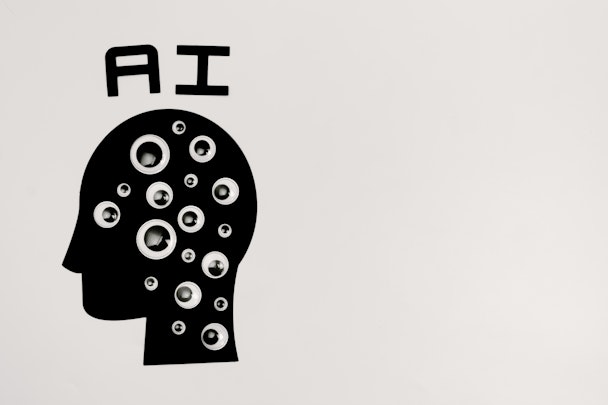The Drum Live: WPP’s chief AI officer says nobody is doing true AI yet
Has adland even started getting to grips with AI yet?

WPP's chief AI officer on AI in advertising / Pexel
Keynoting The Drum Live yesterday (September 29) Daniel Hulme, chief executive officer Satalia and chief AI officer at WPP, argued that by current definitions of adaptive AI, nobody is actually using it.
According to Hulme, despite all the hype and talk of adoption of AI in advertising, the industry is "extracting insights” and not yet using the technology to build systems that make decisions.
“The key word in this definition is adaptive. What you want to do is build systems that make decisions, learn about what those decisions are good or bad, and adapt themselves on next time they make better decisions,” he says. “If I held this definition to what we currently do in industry, nobody’s doing AI.”
Advertisement
The adoption of AI was the dominant thread running through every session on day one of The Drum’s event, which brought together brands, agencies, and media owners at The Drum Labs in London.
Hulme “controversially” told his audience that extracting insights from data doesn’t always lead to better decisions. “You've got to be very smart about the insights you’re extracting, and then giving those insights to human beings to be able to make good decisions,” he explains. “But I would argue that companies don’t have insight problems, they have decision problems.”
Using a simple math equation, he exposed businesses’ decision-making conundrum and gave one key rule: any decision that needs more than seven people, don't use a human for, use AI. He argued that for the three elements of an organization – goods, workforce, and back office processing – “AI will disrupt each one of those.” Organizations that embrace AI in this manner, Hulme says, “are going to win; they're the ones that are going to converge those three digital twins over the next 5-10 years.”
To help convey Hulme’s theory he broke down his interpretation of the six applications of AI technologies that can be applied to the advertising industry.
Advertisement
1. Task automation
Hulme says task automation has a “bad reputation in the AI community.” It uses very simple algorithms to replace repetitive and mundane tasks humans have been doing. “If you can apply these technologies in the right way, you can free huge amounts of human labor, enabling those people to do much more interesting creative things,” Hulme says.
2. Content generation
The industry can now generate any generic content, whether imagery, video, or copy. The “battleground,” Hulme says, is not how to create content but how to create differentiated content. For example, it can adapt Coca-Cola’s brand guidelines to make a cat drinking a Coke in space rather than just publishing an image of a cat with a soda in space.
“So, we can build brains that allow us to generate brand-specific content and, but now we need to solve that last mile, which is [going] from a good image to production-grade – and that is very hard,” Hulme says.
Suggested newsletters for you
3. Large language models
AI allows marketers to understand how audiences perceive and potentially feel about content. Previously, marketing has relied on consumer insight, but, as Hulme suggests, consumers aren’t good at honest reporting.
“Now we can build those models that represent how our audiences perceive content, we can get access to those invisible signals that we’ve never been able to access before and use those signals to better predict activation clicks, like sales, is incredibly powerful,” Hulme says.
4. Extracting insights
Hulme says that extracting insights is what the industry has been calling AI for the past decade. The exciting part for Hulme isn’t the technology’s ability to extract data but humans’ ability to use that to explain the world.
5. Decision making
Hulme says that once a marketer has managed to predict how their content will perform across different channels, they need to push that content across channels to get a return. This is a complex optimization problem that AI can ease, he adds.
6. Human augmentation
“One of the things that we’re doing with one of the biggest brands in the world is that we take a large language model, and we train the slides language model on the data with employees on their emails and calendar feedback,” Hulme says. He calls this a “digital twin.”
“So what organizations are ultimately trying to do and what we’re trying to do in media marketing is create a digital twin of our organization, which is a simulation of the flow of goods and services across our supply chain,” says Hulme.

